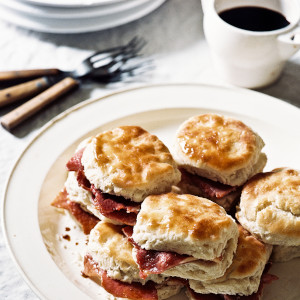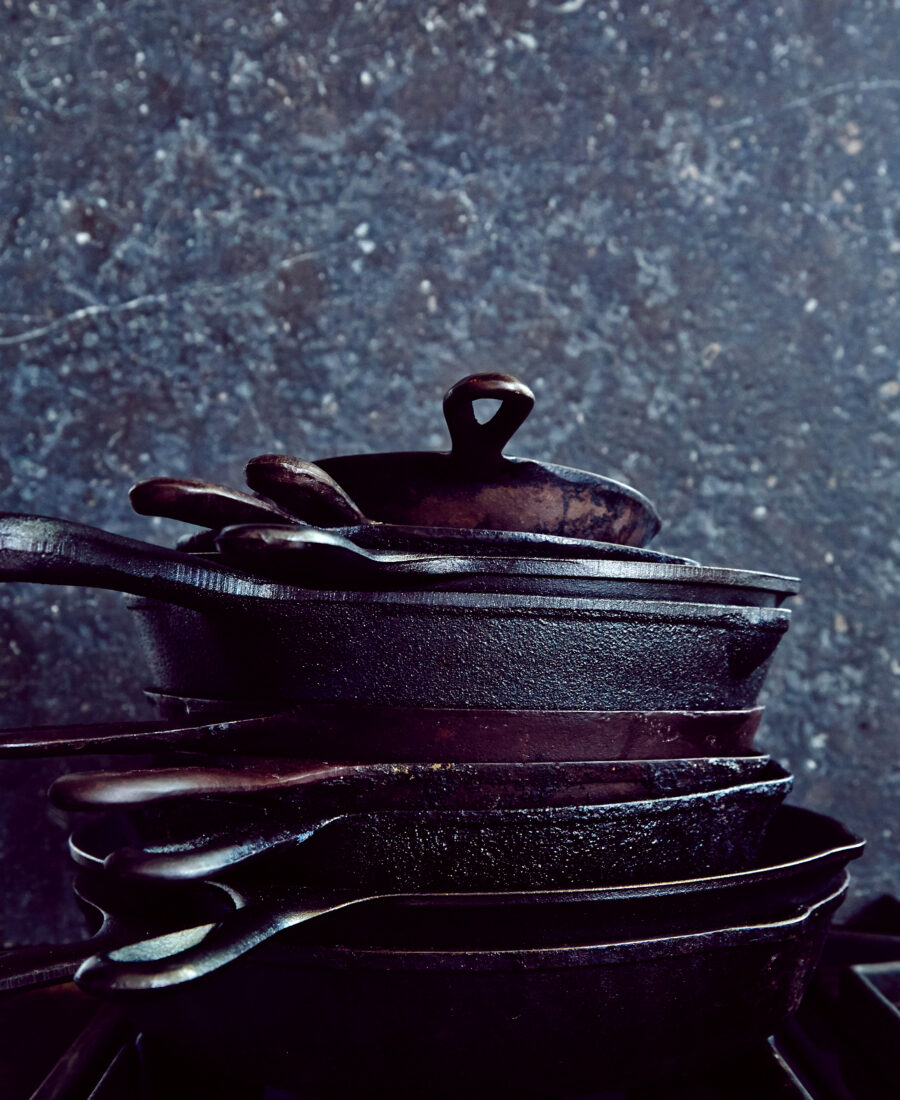Earlier this month, the Washington Post shared results from the best kind of poll: an utterly frivolous one. The work of a journalist at public opinion and data company YouGov, it broke down kitchen tool ownership by age, political party, and other demographics. Among the poll’s findings: Democrats are more likely than Republicans to own sporks. Younger adults are more likely than older ones to keep chopsticks on hand. Twelve percent of U.S. adults don’t know if they own a zester.

While the YouGov data crunchers didn’t dwell much on geography, Garden & Gun has reported on the habits of Southern chefs and home cooks long enough to know they bring their own set of values to the utensil drawer. So we asked our newsletter readers to weigh in, consulted our past articles on the subject, and crunched the results into a highly unscientific list of ten essential tools for the Southern cook.
10. Small serrated knife
Technically only one newsletter reader, Ellie H., nominated this tool, and for one specific purpose—“to slice fresh homegrown tomatoes!” We agree so wholeheartedly that we awarded it a spot on the list.
9. Deviled egg plate
This isn’t an item you use every day, but if you’ve ever tried schlepping slippery eggs on a non-indented plate, you understand. “Bonus points if it is hobnail or carnival glass,” says reader Leigh B. (Check out these pretty vintage deviled egg platters.)
8. Corn scraper
Rule of thumb: If Nathalie Dupree, the fifteen-time cookbook author and esteemed queen of Southern cooking, says you need a corn scraper (to “get the juice out” when making creamed corn), you need a corn scraper. Tool of thumb: Corn holders are also a good investment.
7. Citrus juicer
According to the above-referenced YouGov poll, adults under forty-five are more likely to own a manual citrus juicer than older adults are. Extrapolating from our newsletter feedback, Southerners are also on team lemon squeezer. What’s the common denominator between the two cohorts? We don’t know, but we’re going to fix ourselves a drink.
6. Dutch oven
Every Southerner needs a sturdy pot for cooking chili, chicken bog, jambalaya, and other canonical dishes, and many of our readers—and G&G editor in chief Dave DiBenedetto—count one in their cast-iron collection. But Virginia chef Wade Truong named his Le Creuset pot his favorite piece of cooking equipment: “There’s nothing I can’t cook in there.”
5. Rolling pin
The YouGov poll singled out the rolling pin as the item most likely to gather dust in America’s kitchen drawers. Really? Considering these poll results arrived smack dab between pie season and cookie season, maybe that dust is actually flour? Or maybe it’s a Southern thing, as our readers tend to share the opinion of Henrietta S., who says, “There is nothing quite as nice as a well-worn, often-used, handed-down generational rolling pin.”
4. Oyster knife
Fall and winter are oyster roast season, and as G&G art director Julia Knetzer pointed out in a list of staff picks for the kitchen, it’s customary to bring your own shucking knife to the party. Even if you don’t live on the coast, it might be wise to acquire one so—as reader Douglas U. notes—“you don’t waste a bucket of fresh bivalves someone gifts you.”
3. Grease jar
Saving and reusing bacon grease is practically Southern gospel, but don’t go out and buy a container for the purpose. An old pickle jar or soup can is a serviceable vessel for what reader John C. calls “bacony goodness.”
2. Biscuit cutter
Technically you can make biscuits without one—using the rim of a glass, for instance—but it’s a whole lot easier with this inexpensive tool, which lends uniformity, rise, and maybe some beautiful memories. Says reader Ann W.: “I have my beloved grandmother’s. My grandfather built me a stool so I could stand next to her at the dry sink and cut the biscuits out.”
1. Cast-iron skillet
Far and away the most common item cited by our newsletter readers and Southern chefs is the cast-iron skillet—ideally one that’s seen its share of seasoning oil. Chef Kardea Brown cherishes one she received as a graduation gift. Chef Adrienne Cheatham found hers on the street in Harlem. (“I took it home, scrubbed it out, and reseasoned it, and it’s been my baby ever since.”) Many readers spoke of skillets older than they were, including Jere B., who testifies, “We were given my maternal grandmother’s twelve-inch cast-iron frying pan. I would guess it’s closing in on ninety years old. We talk about her every time we use it. If only it could talk back.”








